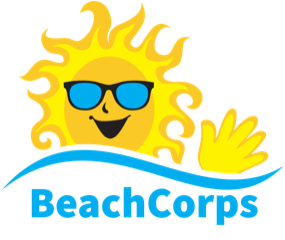BeachCorps is different from other volunteer vacations because we don’t invent the nonprofit cause to please the tourist—or worse, create a for-profit “cause” designed to fleece the volunteer. Instead, we find nonprofit causes that are worth supporting and then bring the tourists to the cause. It’s easy to understand that volunteer vacations should support worthy nonprofit causes. But how do you know if a donation to a nonprofit cause is well used or not? That’s not so easy. But here are some ideas to guide you.
An Open Book, A Straight Shooter: Transparency and Accountability
Major US nonprofits have official IRS 501c3 status that requires them to report income and use of funds. For large, well-established nonprofits there are several online sites that help you gauge transparency and accountability. Mike Montali, CEO of Harbor Compliance, shared some ideas in The Huffington Post:
1. The IRS Nonprofit Charities Database has a tool called “The Exempt Organizations Select Check Tool”. Check to see if your donation is tax-deductible.
2. Charity Navigator rates charities based on their financial health, accountability, and transparency to help donors make informed decisions about their contributions.
3. GuideStar maintains information on 501(c)(3) nonprofits. Financial documents, such as the 990, help you evaluate the legitimacy of an organization. The 990 discloses where and how an organization’s donations are spent, including the earnings of top officers.
Helping the Little Guy: Help Little Nonprofits Grow
But not all nonprofits make full use of these online platforms, and many are good causes. In particular, causes that are focused overseas often don’t appear on these major platforms. Furthermore, big nonprofits with lots of donors have the ability to fill out all the forms and show donors exactly how they spend money and the results achieved. But if we only support big nonprofits, then the innovations of small nonprofits will disappear. It’s critical to support worthy up and coming nonprofits grow and mature to the point where they have the institutional capacity to become more transparent and accountable in their reporting.
Eye in the Sky; Eyes on the Ground
So helping little nonprofits is important, but which ones? Which nonprofits can you trust if they aren’t on major online platforms? The fact of the matter is that if you are volunteering in a far-off land you don’t know well (which is part of the fun and learning) you need to find a trusted partner to help you find the good nonprofits. You need someone who is willing to stake their good name on a nonprofit. You need someone that has both an Eye in the Sky to see the big development picture to know what causes need support. You also need someone with eyes on the ground to know if the nonprofits are run by people worth trusting.
Measuring Success: Home Run Tally
Another key question for your volunteer vacation is: does the project describe what results will be achieved? These results can be of two kinds: outputs and outcomes. When you input a donation, any good volunteer project should be able to point to short-term, home run outputs: Hour of English teaching delivered; a home repainted or rebuilt; 100 pounds of recycled plastic recycled. But don’t stop there. Ask yourself this: beyond outputs, what outcomes does the nonprofit hope to achieve? Outcomes are longer-term changes like growing empowerment of local leadership; an expansion of a “pay it forward” ethos in helping others after you’ve been helped; a change in a culture of littering. Those important outcomes aren’t just home runs; they are grand slams in the World Series! And they require patient and a longer-term commitment to achieve. Your BeachCorps “Little Grain of Sand” by itself is not going to make much of a difference. But by supporting nonprofit causes that seek to bring about positive change over time, you can be a little part of something big and beautiful.
Earmark Donations for Great Uses, Like Scholarships
A great way to make sure that your donations to a nonprofit cause are being used wisely is to wisely earmark some or all of the donations to specific purposes that make sense. Wherever possible, donations should be restricted in their use to promote transparency and accountability. For example, many BeachCorps projects are going to limit the use of all or some of the funds to expenses directly related to the execution of the project as well as measurable long-term investments, particularly in scholarships for kids who are supporting the volunteer work. (Photo: Graduation at Puntacana Foundation supported Kheel Politécnico).
Scholarships are awesome. By earmarking funds to scholarships, we help create a virtuous circle where kids are empowered via education to be agents of change in their community, the friends and family of those kids join volunteer operations, and other kids hoping to earn scholarships join volunteer efforts. In addition, scholarship systems have built-in oversight: the institutions supporting the volunteer work, the kids and their families, and the educational institutions where the scholarships are being paid all provide oversight to make sure funds are being properly used. Finally, adding kids who are earning scholarships allows BeachCorps to support nonprofit work that helps the poorest of the poor who may be unable to “give back” in that moment, but we are still promoting local empowerment by giving kids an education and getting them involved in solving the problems of their own community. Win-win!
#VolunteerVacation #Sustainability #SustainableTourism #PuntaCana #DominicanRepublic #Nonprofit #Education #ToxicCharity #SustainableDevelopment #Scholarships


